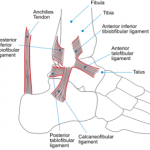SNATCHING DEFEAT FROM THE JAWS OF VICTORY?
Do you work to return your injured athletes to play as quickly as possible? Hang on, before you say ‘Duh, of course I do!’, I want you to think about your previous season as a sports physiotherapist. Did any of the following ever impact on how quickly you allowed an injured player to return to play:
- Part of the season (e.g. semi-finals)?
- Importance of the player?
- Pressure from athlete or coaching staff?
If you answered even just a slight yes to any of the above then you could argue that you do NOT always get the player to return to play as quickly as humanly possible. Now, honestly answer, as quickly as possible?? Long-term readers may remember that I have touched on this concept previously in my post Return to Play Criteria in the Semi-Finals.
THE IMPACT OF DEFEAT ON RETURN TO PLAY
I bring this up again today because recently my team has hit a slump in form. This is due in no small part to being plagued by some significant injuries to key players. Thus, as I know you can imagine, this has put increased pressure on the medical team to ensure some strict return to play timeframes are adhered too.
Unfortunately, it has also lead to players and coaching staff alike pushing the envelope, and wanting to risk early return to play. Whilst it is easier for an injured player to sit on the bench and watch their team win, sitting idly by and watching them lose is a much harder task. As the team physiotherapist it is my role to ensure that risky behaviour induced by a losing team is avoided. To achieve this risk reduction there are a few things I keep in mind.
MINIMISING THE LOSS OF LOSSES
In order to minimise further losses that are induced by the pressure of an injured athlete’s team losing I ensure that:
- I realise that I am the sports physiotherapist, not a fan!
- I put the athlete first and the team second.
- I utilise objective RTP criteria: Check out this and this.
- I use evidence based indicators of appropriate return to play time-frames. Check out: Clinical Predictors of Return to Play Timeframes Following Hamstring Injury
- I educate the athlete on the risks of early RTP and the likelihood of injury recurrence (including further time off)
- I am always aiming for the quickest RTP time-frame, and this time-frame is consistently being revised and updated.
- I am communicating with all the relevant stakeholders, and EVERYONE is on the same page.
Whilst this is by no means an exhaustive list, this is just something to get you thinking about your own decisions regarding allowing an athlete to return to play, particularly in the presence of pressure from players and coaches.
What are your thoughts – let me know in the comments or catch me on Facebook or Twitter
If you require any sports physiotherapy products be sure check out PhysioSupplies (AUS) or MedEx Supply (Worldwide)
Related Posts
Comments










Good post.
I actually lost one of my players because of this. Grade one hamstring, team struggling near the relegation places, he got chucked back into a game against my advice after 9 days rehab (he wasnt even close to fit) and re-strained after about 10 minutes. He ended up losing his starting place in the team and left for another club not long after that.
Lesson learned by me!
Thanks for the comment Joe – ouch that hurts! I am certain that there are thousands of other stories just like yours. We have all been bitten by this.